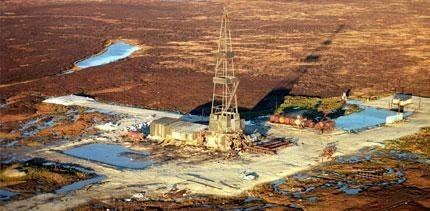Offshore/onshore onshore Discovery 1966 Start of production 1978 | ||
 | ||
Current production of oil 16,500 barrels per day (~8.22×10^ t/a) Current production of gas 25,152×10^ cu ft/d (712.2×10^ m/d) Estimated gas in place 353,000×10^ cu ft (10,000×10^ m) | ||
soviet estonia develops the urengoy gas field
The Urengoy gas field in the northern West Siberia Basin is the world's second largest natural gas field after South Pars / North Dome Gas-Condensate field. The gas field has over ten trillion cubic meters (1013 m³) in total deposits. It lies in Yamalo-Nenets Autonomous Okrug in Tyumen Oblast of Russia, just south of the Arctic circle and named after the settlement of Urengoy.
Contents
History
Urengoy gas field was discovered in June 1966. The first drilling hole hit gas on 6 July 1966 and the field started production in 1978. On 25 February 1981, Urengoy extracted its first one hundred billion cubic meters (1011 m³) of natural gas. From January 1984, Urengoy gas started to be exported to Western Europe through the Urengoy–Pomary–Uzhgorod pipeline.
Production
The Urengoy gas field extracts 260 billion cubic meters of natural gas, more than 5,000 tons of condensate and 825,000 tons of oil per year. It is operated by Gazprom dobycha Urengoy, a subsidiary of Gazprom.
In September 2013, Gazprom announced that a total of 6.5 trillion cubic meters of gas had been produced.
The gas field is serviced by the town of Novy Urengoy, founded in 1973.
